Projects
Supporting innovative, cutting edge ideas, the Research Innovation Fund (RIF) provides seed grants for cross-college collaborative projects.
How do I apply?
Project Description
Media
Filters
- Project Types
- All
- Animal Health
- Aquaculture
- Automation and Robotics
- communities
- Communities/Farmers/Relations
- Computational Modeling
- Controlled Environment Agriculture
- Crop Production
- Dairy/Livestock Production
- Data Integration and Processing
- Farmers
- Farmers, Communities, Relationships
- Food Safety
- International Agriculture
- Iot and Networks
- Machine learning
- Machine Learning
- Plant Breeding
- relations
- Sensing Technology
- Soil
- Trustworthy AI
- Years
- Project Creators
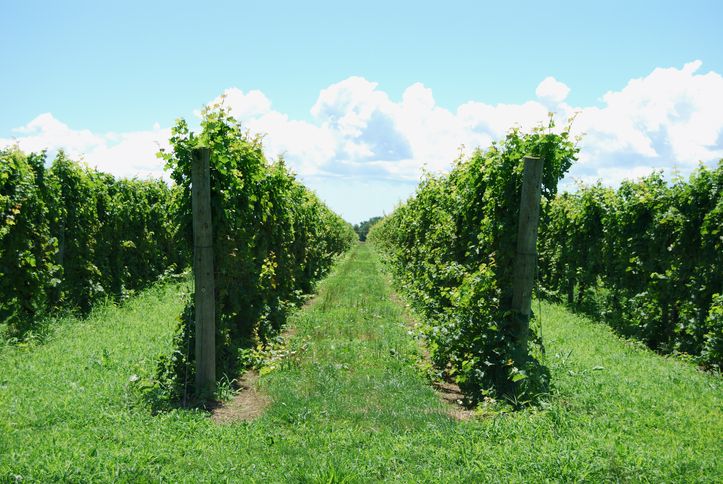
Developing a Satellite Image-Based Sampling Protocol for Nutrient Monitoring in New York Vineyards
Extension specialists recommend that vineyard managers sample for leaf blade nutrients by collecting a large, random sample in each block each season. However due to the time and effort required, this task is either completely ignored or a biased sample is collected. The goal of this project is to use free, readily available, remotely-sensed images such as Normalized Difference Vegetation Index (NDVI) and Synthetic Aperture Radar (SAR) images to assess vineyard block variability and guide efficient sampling practices. Guided sampling pathways will reduce the labour and fuel required for nutrient sampling, resulting in reduced production costs for NYS grape growers. An additional benefit may be that growers are more likely to sample, resulting in improved environmental sustainability due to more targeted fertilizer applications.
Manushi Trivedi (GR-CALS), Primary Advisor: Justine Vanden Heuvel (CALS), Secondary Advisor: Rowena Lohman (COE)
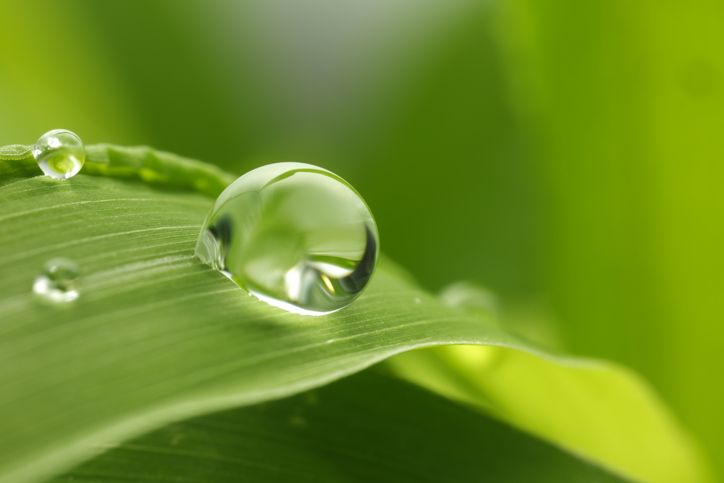
Noninvasive Measurements on Plant Conditions Inspired by Raindrop-Leaf Interaction
This research will investigate the mechanism of how an elastic leaf interacts with an impacting raindrop, having potential implications for characterizing the water/nutrient condition of plants from the drop-leaf interaction. When the drop hits on a leaf, the leaf flutters differently depending on the properties like stiffness and shape. Based on this fact, we are trying to reveal the functional relation between the leaf motion and its water/nutrient stress. High-speed cameras will quantify the shape deformation of the leaf and sensors will measure vibration. Using a piezo-electric material instead of a leaf, the project aims to develop an innovative engineered system based on this raindrop-leaf interaction to record and store mechanical vibrations subject to drop impact leading to an innovative energy-harvesting device from raindrops.
Jisoo Yuk (GR-CALS), Primary Advisor: Sunghwan (Sunny) Jung (CALS), Secondary Advisor: Kirstin Petersen (COE)
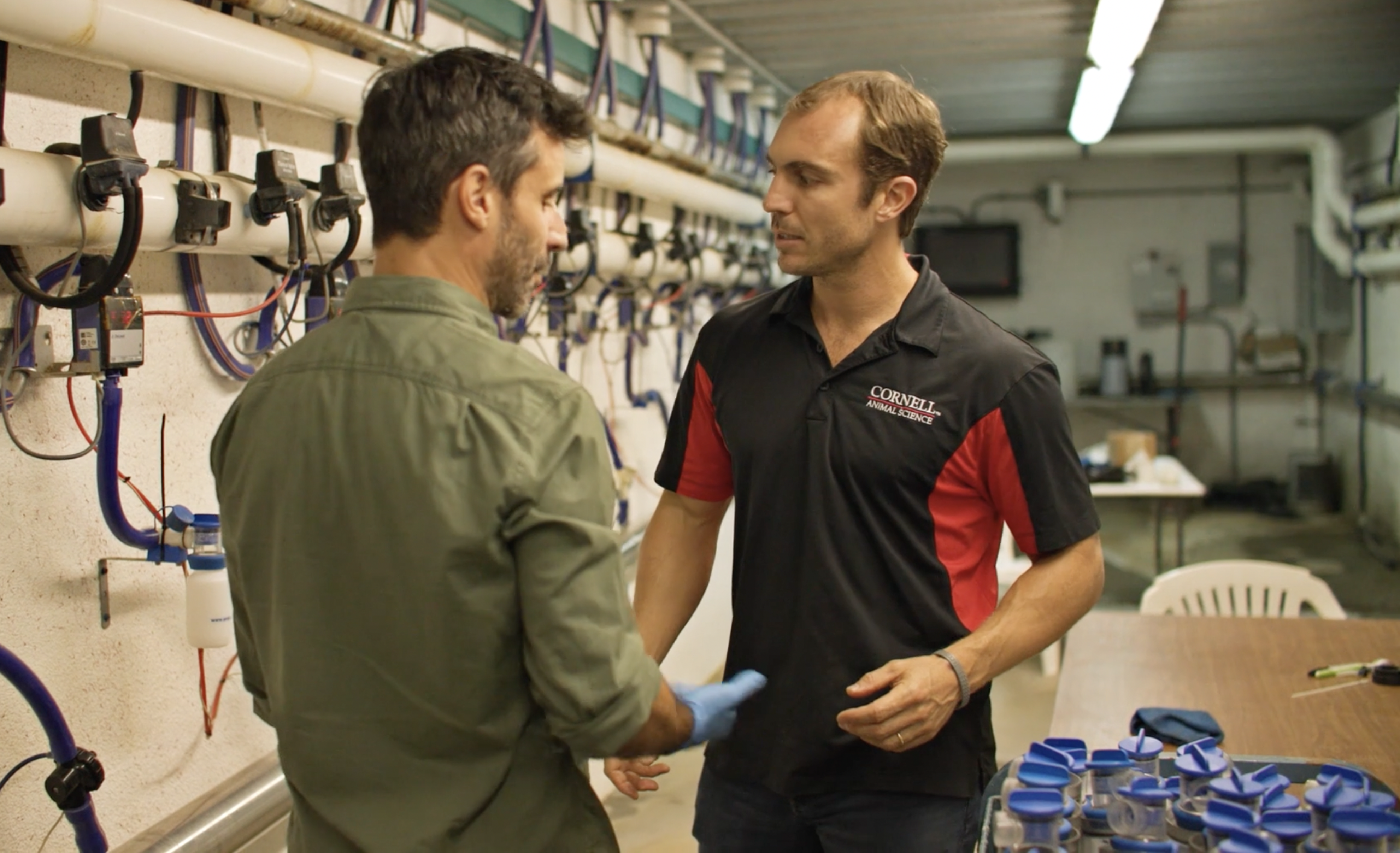
Optimization of The Milk Harvesting Process Through Automation and Data Integration
Adequate udder stimulation of dairy cows before milking is critical for the harvest of high-quality milk, traditionally achieved through milk stripping by hand. To date, dairy operations apply a fixed pre-milking stimulation regimen to all cows, irrespective of their physiological needs. This results in delayed milk ejection (DME) in approx. 25% of cows on New York State dairies. Delayed milk ejection leads to poor milking efficiency, impaired teat and udder health, and reduced milk yield. We estimate that DME results in an income loss of approx. $250,000/year on a 1,000-cow dairy. Accommodating the physiological requirements of individual cows in a precision dairy farming system is of utmost importance to optimal milk harvest and animal well-being. To achieve this, a new dimension for automated identification of cows with DME and providing them with additional pre-milking stimulation using automated pre-milking stimulation (APS) systems is critical.
Matthias Wieland (CVM), Julio Giordano (CALS), Paul Virkler (CVM)
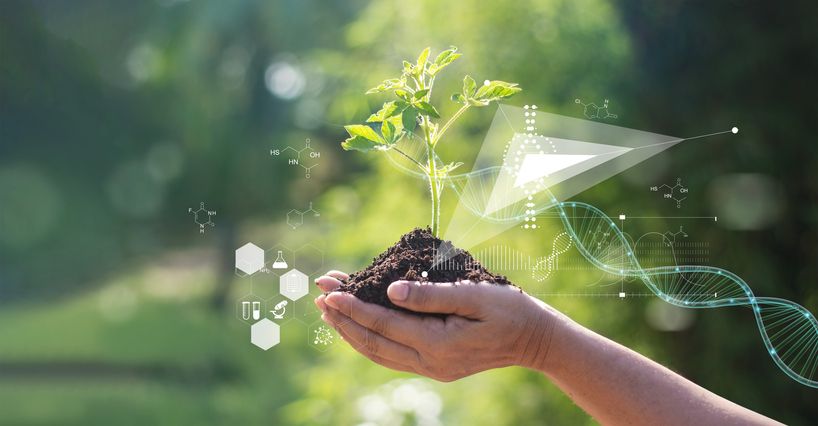
Illuminating Belowground Environments by Harnessing Plant Metabolites for Programmable Plant Phenotyping
In spite of its potentially massive agricultural and economic impact, state-of-the-art methods remain unable to reliably predict plant performance in real-world field conditions. Much of what is known regarding plant performance in controlled laboratory conditions fails to hold true in real-world environments. To facilitate the translation of “lab knowledge” into functional predictions in the field, we will develop an underground biosynthetic sensor that enables the molecular dynamics of belowground processes to be illuminated aboveground. Biosensors will be used to transmit belowground detection of environmentally-responsive flavonoids into the arial half of the plant where these signals can be detected using automated phenotyping. This project will ultimately produce a new transformative technology for interrogating root-environment interactions. This tool can be engineered to detect almost any below-ground interaction that triggers the production of a specific metabolite (e.g. pathogens, beneficial microbes, and toxic compounds), and thus can be widely adapted to address a range of agricultural challenges.
Sijin Li (COE), Margaret Frank (CALS)

Developing a Smart Feeding System in Fish Aquaculture Systems
Feed is one of the biggest production costs when producing fish. A large amount of the feed produced is currently wasted throughout the feeding process. This causes decreased water clarity and affects fish growth rate. During this research project, visual data will be collected along with data from several sensors, to include but not limited to, pH, dissolved oxygen, and temperature. Once data has been collected, a machine learning algorithm will be created to understand when fish should be fed. The goal of this research project is to implement a “smart” feeder within a research setting and gain valuable knowledge about which data is best to understand when fish need to be fed.
Matt Roohan (CALS); Eugene Won (CALS); Maha Haji (COE)
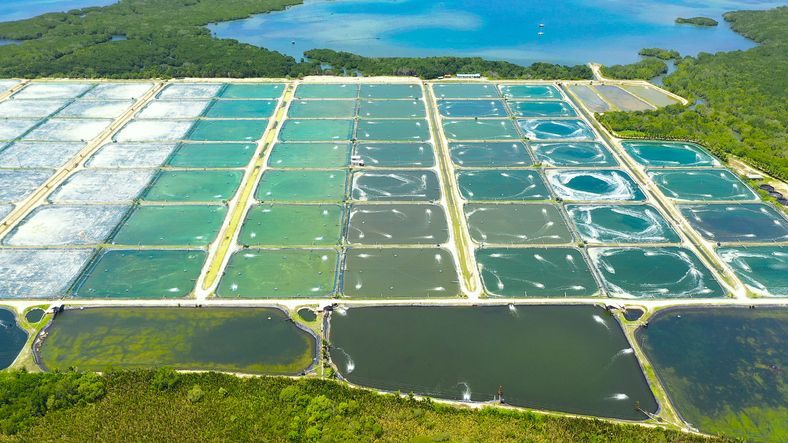
Autonomous Monitoring for Offshore Aquaculture
Aquaculture – with its ability to produce high-quality protein with no need for land, freshwater, or fertilizer – will be key to ensuring adequate food supplies for the world’s growing population. Competition for near-shore space, episodes of poor water quality, and environmental considerations have motivated farmers to shift towards less accessible, more cost prohibitive open ocean farming. Autonomous monitoring can be an effective means of reducing these barriers. Advancements in sensor technologies have allowed for the expansion of remote monitoring in offshore aquaculture farms for water quality and fish behavior. A key requirement of automated offshore monitoring, however, is the transmission of data back to shore. The objective of this research is to design and test an autonomous monitoring system for aquaculture farms that constantly monitors water quality and relays real-time data back to shore via satellite.
Isabel Mejia-Roberts (UG-COE); Maha Haji (COE); Eugene Won (CALS)
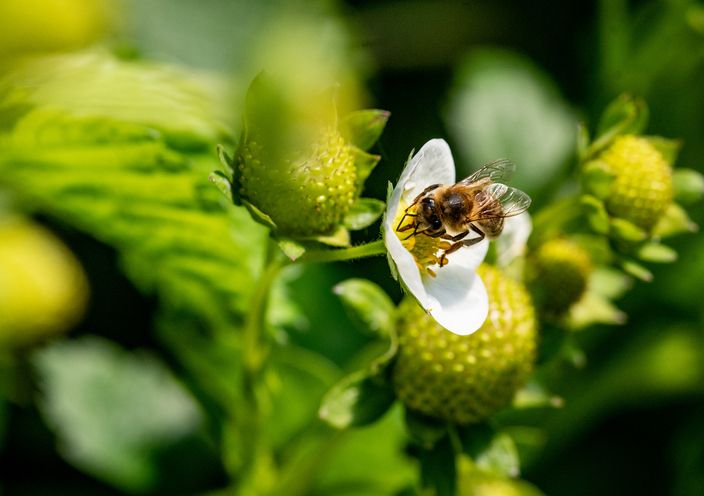
Automated Monitoring of Strawberry Pollination
The world’s food security is highly dependent on pollinators with bees being primary members of that community. Bees are declining at an alarming rate due to several factors including use of pesticides and disease. This decline has made pollination via drone an appealing alternative. Initial studies on drones’ effectiveness to pollinate strawberry plants has proved inconclusive. This work helps develop additional field experiments to validate current data as well as how this data can be employed in an open-source format. Using automated entrance monitors, solar-powered acoustic sensors, and computer programs that use the size, symmetry, and color of the strawberries to create models. The technology developed for this study can help pollinator focused researchers in the future as they explore methods for monitoring the entrance of a hive, understanding the consequences of pollinator interactions with strawberry plants, and the use of acoustic monitors in a field to measure the presence of wild bees as well as other pollinators.
Tallisker Weiss (UG-CALS); Kirstin Petersen (COE); Scott McArt (CALS)
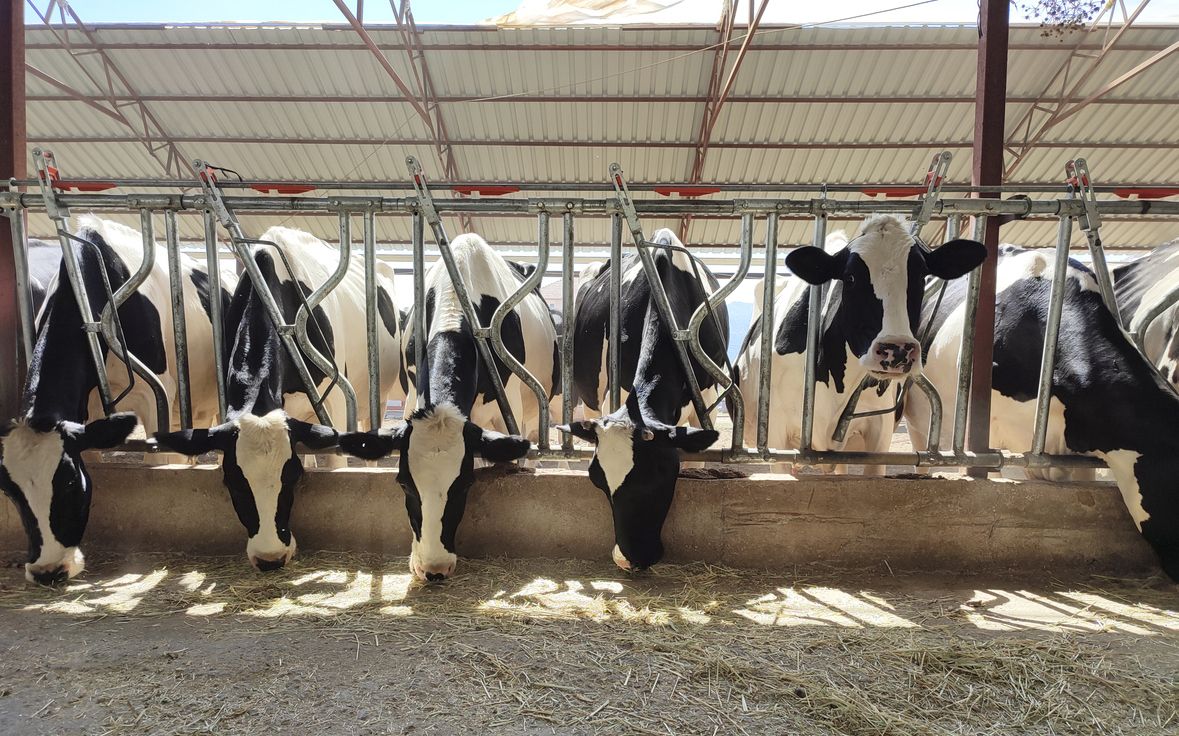
What Can Rumination Time Tell Us About the Blood Calcium Status of Early Lactation Dairy Cattle?
Subclinical hypocalcemia (SCH) affects over 40% of multiparous dairy cows in early lactation. Arising from a drop in blood calcium (Ca) after calving due to the increased demand for Ca to support lactation. Delayed or prolonged episodes of SCH are associated with decreased production and feed intake, increased risk of additional diseases, and herd removal. Previous reports have shown that daily rumination time (RT) is positively correlated with blood Ca in the early lactation period. As many farms have already implemented sensors to track RT of cows, the results of our study can be incorporated into the preexisting software as an alarm, providing a practical method of identifying cows experiencing delayed or prolonged SCH. By identifying these cows either before or as they are experiencing reductions in blood Ca, more targeted treatment and management strategies can be implemented to reduce the risk of additional disease development, thus improving cow health and productivity as well as farm profitability.
Claira Seely (CVM); Jessica McArt (CVM); Julio Giordano (CALS)
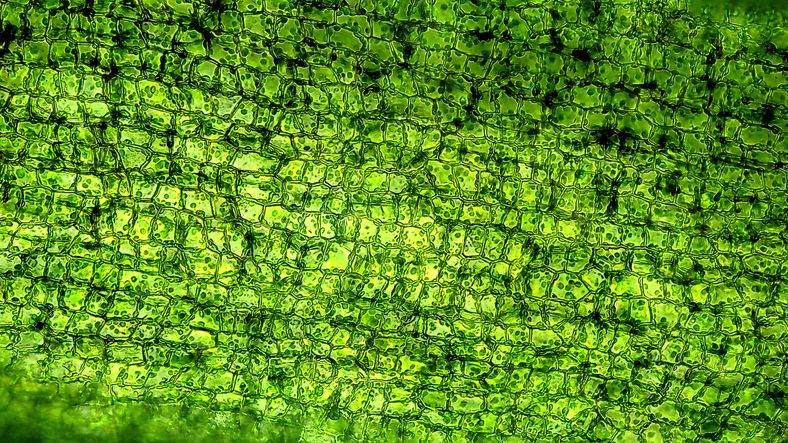
Genetically Encoded Biosensors for Plant Water Stress
Creating digital interfaces that allow plants to communicate their needs to humans and automated control systems has the potential to revolutionize agriculture. A system of sensors that can provide a dynamic readout of plant metabolic needs and state of stress is a necessary and currently missing component of this interface. Towards this end, we propose to develop genetically encoded biosensors that provide insight into plant cell stress, including stress related to water deficiency. The proposed sensors are based on a successful design that has been developed for quantifying macromolecular crowding in mammalian cells using FRET (Forster resonance energy transfer) while accounting for spectral interference from the chlorophyll. By overcoming this challenge, we hope this work will help develop sentinel “stress sensor plants” in crop fields can provide a real-time readout of water stress for precise and intelligent irrigation.
Ling-ting Huang (COE); Matt Paszek (COE); Adrienne Roeder (CALS)
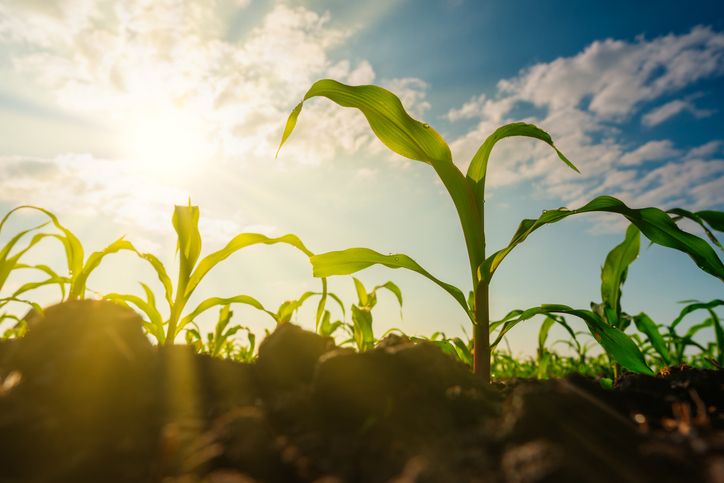
Multi-sensor Crop Monitoring Platform
This project intends to build a ground-based crop monitoring platform that can analyze crop physiology and canopy characteristics by collecting data during the growing season of maize. Several sensing technologies including a line sensor, an RGB camera, and a lidar will be equipped to the platform to help collect crop physiology data at a high frequency. This platform will be deployed on a maize field of the campus farm where researchers can obtain accurate trends of the maize growth. Currently, the platform works well in a laboratory environment but faces issues in the field due to the effect of the bright sunlight on the ability of sensors to measure crop height at high throughput. The goal is to debug and improve the existing line sensing sensor so that it works on real farms with robustness. If time permits, an automated movement, and navigation system can be added to the platform. This allows the platform to travel straight along a row of maize while collecting data on its own.
Chenxi Qian (GR-COE); Louis Longchamps (CALS); Joseph Skovira (COE)
- ALL
- Computational Modeling
- Data Integration and Processing
- Machine Learning
- Automation and Robotics
- Sensing Technology
- Iot and Networks
- Trustworthy AI
- Plant Breeding
- Crop Production
- Controlled Environment Agriculture
- Soil
- Dairy/Livestock Production
- Aquaculture
- Food Safety
- Animal Health
- International Agriculture
- Communities/Farmers/Relations
Become a Fellow
Stay up to Date
If you have a disability and are having trouble accessing information on this website or need materials in an alternate format, contact [email protected] for assistance.
CIDA Copyright 2023 | CIDA is an equal opportunity employer | Terms of Use | Privacy Policy